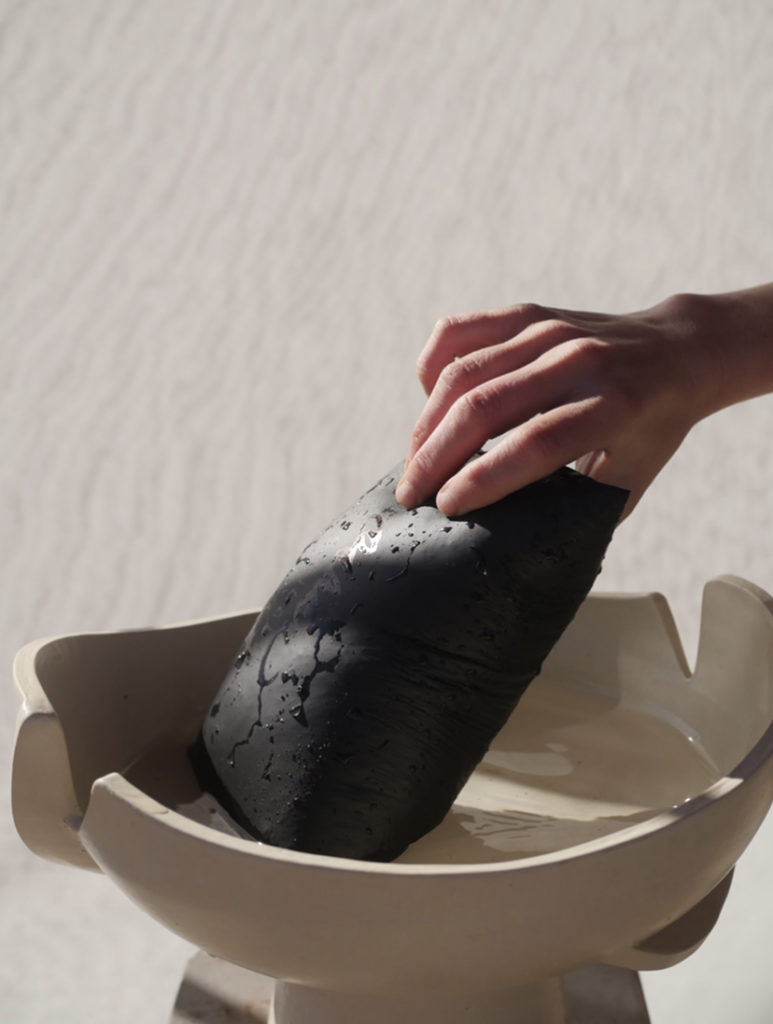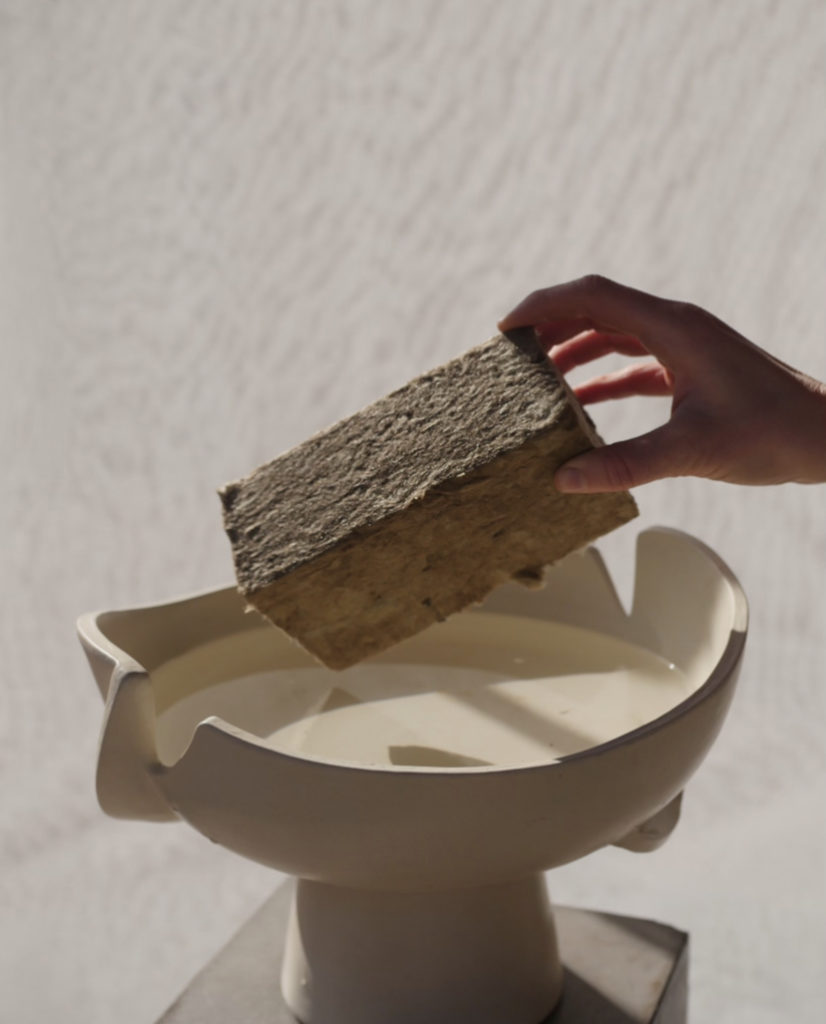Using Floral Foam Alternatives
A Guest Post
By Alyssa Lytle, Founder of Flowering Minds
I am always on the lookout for new sustainable mechanics to utilize for events and to share with our flower community, Flowering Minds. Recently, a few new choices have popped up on the market and they are definitely worth giving a try!
I don’t always use a floral foam alternative — sometimes I use flower frogs or hair pin flower holders. I generally choose to use a floral foam alternative if I have a large installation that needs a water source or if I am creating arrangements for events that need to be transported and stay easily intact.
 Today, I decided to use two of them side by side in a design, Sideau Agrawool (below) and the Oshun Pouch (above)!
Today, I decided to use two of them side by side in a design, Sideau Agrawool (below) and the Oshun Pouch (above)!
Here is a quick comparison based on experiences with using them both:
AGRAWOOL:
- Made of basalt and sucrose
- Can be cut down to any size
- 100% Biodegradable
- Will absorb water after multiple uses
- Does not self-contain moisture — drips a lot when used in installations
- More difficult to penetrate with delicate stems
- Hydrates within seconds
OSHUN POUCH:
- Made of plant starch
- Cannot be cut down, the size is not adjustable
- Biodegradable/Compostable
- Does not reabsorb water after 1 use
- Self-contains moistures — does not drip when used in installations
- Easier to penetrate with delicate stems
- Takes up to 4 minutes to fully hydrate
Watch Alyssa Design with Agrawool & Oshun Pouch
![]()
Based on my design experiences with them, they each have their notable perks and slight drawbacks.
THE POSITIVES:
The OshunPouch contains its own water and barely drips when used in installations. It also provides a much easier material to insert stems into. The design experience is very enjoyable because stems go in easily and stay in place really well.
Agrawool can be used over and over again! Even after I use it a few times, I can surround it with sheet moss and chicken wire to hold it together and get a few more uses out of it before I dispose of it. It is also more versatile size and shape-wise. You can cut it to any shape you need.
THE DOWNSIDES:
The OshunPouch can’t be cut down to any size or shape you need. You must use it as is. This isn’t a terrible downside, but it’s a notable difference from Agrawool.
Agrawool drips a lot unless it is somehow contained with a vessel. I haven’t found it to be a problem when I am creating installations outside, but it can get messy in pristine, indoor settings.
CONCLUSION:
My conclusion is that they are each amazing tools that each have a time and place when they can really shine and be useful. They will both continue to be my go-to mechanics when I need a floral foam alternative!
 Want to learn more from Alyssa? Check out Flowering Minds – a membership filled to the brim with virtual tell-all floral education, business insights and community support from hundreds of like-minded florists from around the world.
Want to learn more from Alyssa? Check out Flowering Minds – a membership filled to the brim with virtual tell-all floral education, business insights and community support from hundreds of like-minded florists from around the world.
Comments:
Leave a Reply
Share your Thoughts:
Subscribe and stay connected
This site may contain copyrighted material the use of which has not always been specifically authorized by the copyright owner. It is being made available in an effort to provide educational information about all things related to floral design and production. It is believed that this constitutes a 'fair use' of any such copyrighted material as provided for in section 107 of the US Copyright Law. In accordance with Title 17 U.S.C. Section 107, the material on this site is available for viewing without profit to those who have an interest in reading or viewing the website information for educational purposes. If you wish to use copyrighted material from this site for purposes of your own that go beyond 'fair use', you must obtain permission from the copyright owner. If your copyrighted material appears on this web site and you disagree with our assessment that it constitutes "fair use," please contact us and we will remove it from our site.

Its good to see new products coming to market, although Agrawool or sideau as its now known has been around for a while and is basically rock wool. In terms of sustainability there are concerns on both products, basalt the mineral used in Agrawool and the oasis product fibre floral has to be mined and there are concerns on the process, the oshun pouch is made with coir again there are concerns on sustainability.
The price is also prohibitive to many florists.
Designing in water or with chicken wire/ frogs /twigs is still a more environmentally friendly route.
A tip for using Agra wool and fibre floral – wrap in compostable clog film or caddy bags, its much easier to insert stems…
Thank you for taking the time to share your insights, Sabine. It’s helpful to consider all the info we can gather as a floral community when making changes and decisions about sustainability, so your thoughts are appreciated. Thanks for the tip on using Agrawool!
Agrawool is readily biodegradable, so that’s good. But the manufacture of Agrawool is quite detrimental to the environment. Basalt rock is heated up to a molten lava which is into blown/spun into “batting.” The fossil fuel input needed to make molten rock is huge,
resulting in a large carbon footprint. Like other “spun” rock products (silica, asbestos), Agrawool can be irritating to skin and it’s not good to breathe in.
Thanks for sharing these insights, Mary. Appreciate the food for thought.